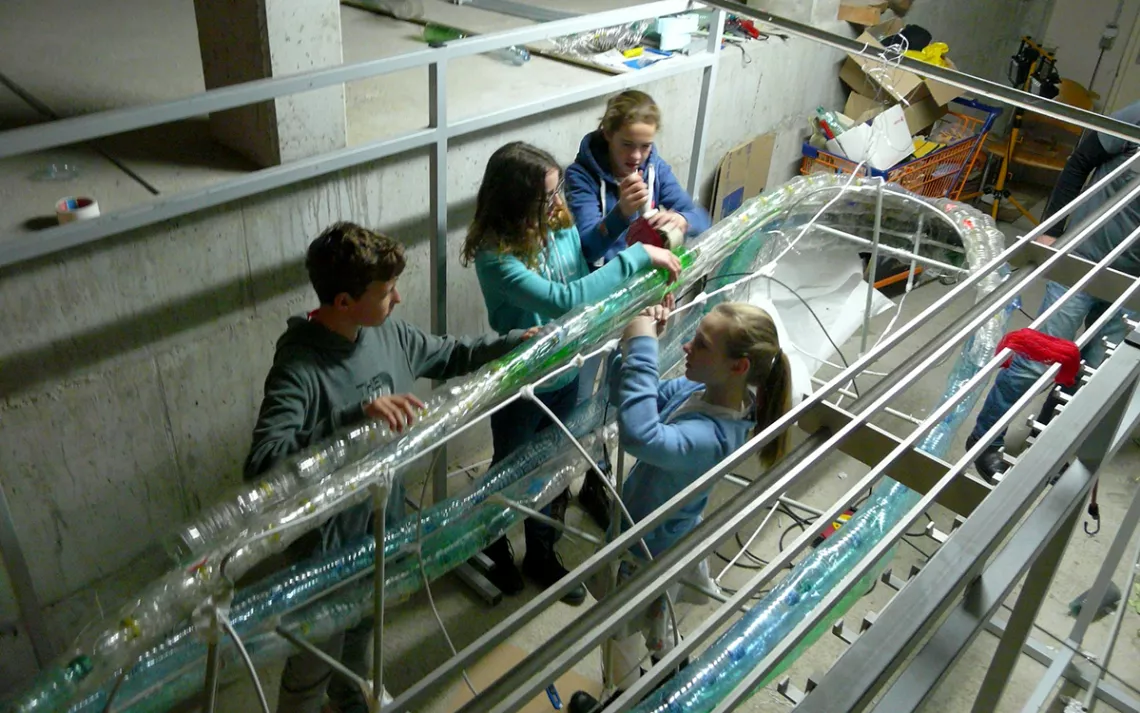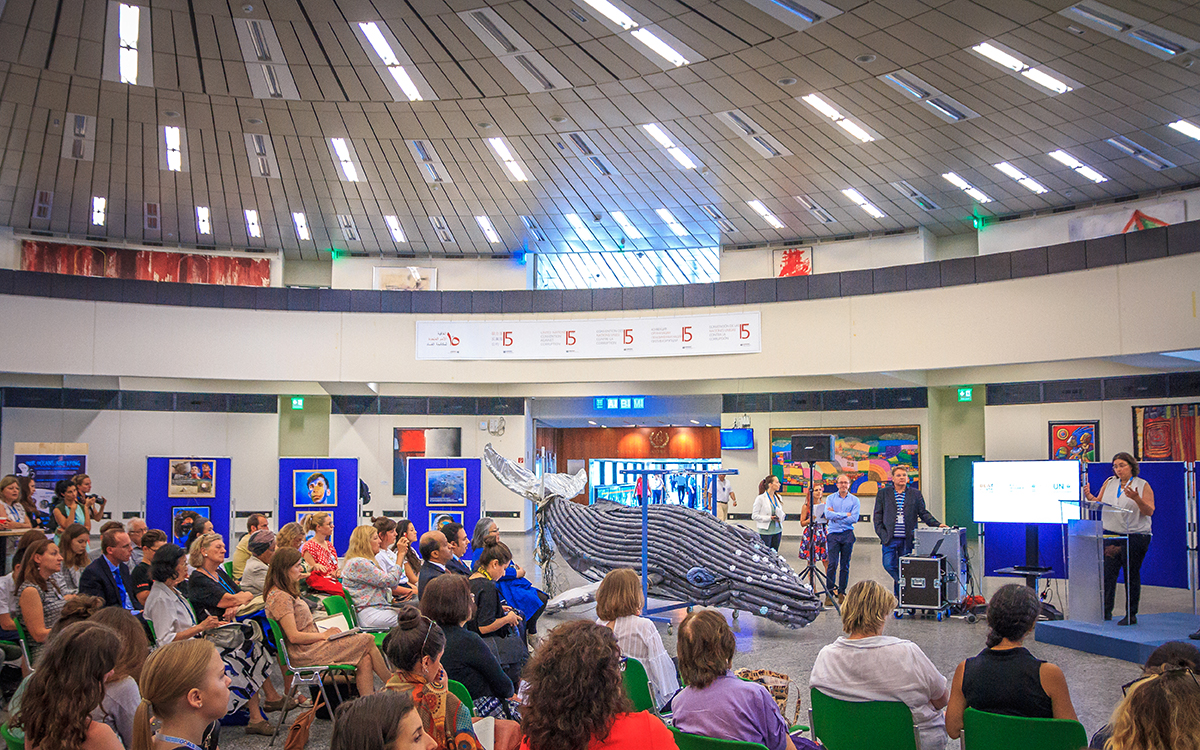The Giant Plastic Whale That Inspired a UN Youth Ocean Summit
2018 marked the inaugural Children’s Clean Ocean Summit

Photos courtesy of Kids Save Ocean
To fight ocean pollution, many kids across the globe participate in beach cleanups—they’ll spend a Saturday plucking plastic water bottles and toothpaste caps out of sand and from rocks’ crevices. On June 22, however, hundreds of students from six Vienna schools took their dedication to ocean health a step further. They took over Austria’s UN headquarters to participate in the world’s first United Nations Children’s Clean Ocean Summit.
The event was the first of its kind to encourage youths to work together to raise governments’ and citizens’ awareness of the issue of ocean pollution, including the billions of pieces of plastic and scraps of microplastic fibers currently plaguing our seas’ flora and fauna. While the summit was sponsored by the United Nations and the nonprofit Kids Save Ocean, the idea originated with art teacher Peder Hill, a California transplant to Vienna who sought to provide his teenage students with a rare glimpse into the world of conservation diplomacy and inspire the next generations to start considering, and implementing, actionable solutions.
Unlike most UN conferences, the Children’s Clean Ocean Summit started with a 16-foot-long to-scale replica of a whale, crafted from ocean detritus that Hill’s Draschestrasse Bilingual School students collected themselves. They’d studied the issue in depth in class and sought to forge a beautiful symbol out of the problem.
“It took over six months to finish the humpback, which is a very long time if you’re 12, or any age for that matter,” Hill says. “But a large core group stuck strong till the end. I’m still amazed.”
Hill, who has a background in biology but now teaches art, says the idea of constructing the large sculpture was to shed a different type of light on the issue of ocean pollution. “It’s kind of one thing after another,” Hill told Sierra, referring to the environmental issues facing future generations. “We wanted to enable kids to become part of the narrative to care about the environment in a really powerful way.”
Once the project was complete, Hill and his students brought to the UN the notion of organizing a youth summit that would result in different projects with a single objective: to inspire global action to clean up the oceans. The UN, which inaugurated its first formal Ocean Conference just last year, welcomed the idea and collaborated with the school to make it happen. Noting that efforts toward environmental activism can feel like “throwing something into a black hole,” Hill notes that oftentimes, “You don’t know what happens.” That’s why he and his students were so adamant about emerging from this summit with a real plan in place.

To raise the curtain on the summit, some of Hill’s students publicly introduced their visually stunning creation via YouTube on World Environment Day (June 5, 2018). The event itself, dubbed “The Last Whale” took place 17 days later. Think of it as an ocean-pollution-specific Model UN. Its 300 attendees, who ranged in age from 12 to 16, convened to listen to speeches from UN officials as well as fellow students (one presenting student video-streamed in from Brazil), and then broke into groups to discuss and vote on various global-scale plans to combat ocean pollution. Hill says they were adamant about not just identifying the problem but also devising a myriad of solutions—such as drawing up a cogent worldwide policy against dumping in oceans and taxing the purchase of plastic products.
The idea was for the young participants to step into the shoes of a UN ambassador: debating issues, drafting resolutions, negotiating, and navigating conference rules. “Kids deserve more than to pretend to have a voice in the global community,” Hill says. "Kids who are educated about issues are far more insightful and forward-looking than your average voter.”
The day's work resulted in a draft of the first Children's Clean Ocean Declaration, which outlines the top student-devised solutions (i.e. those that passed with the most votes) and provides step-by-step plans for restoring and improving ocean health. The youths, Hill says, plan to send their declaration to every governing body on Earth.
Participating students also pledged to provide one another with a report on their progress toward solutions outlined in their declaration on an annual basis. They’ll measure the success of their endeavors according to a simple metric—the ratio of plastic pollution to fish—and report back every year on World Oceans Day (June 8).
The humpback whale seems to have a busy future too. For now, it remains installed at UN headquarters in Vienna. But in 2020, it will travel on to the Haus de Meeres, Vienna’s large public aquarium. Meanwhile, Hill says plans are already under way for 2019’s student summit.
 The Magazine of The Sierra Club
The Magazine of The Sierra Club



